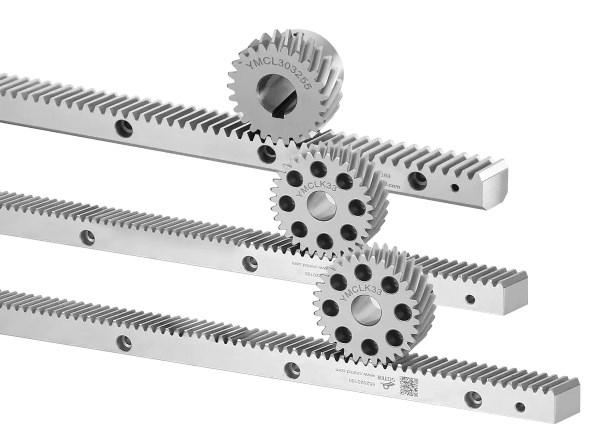Metal rack and pinion systems are widely used in various industries, including automotive, industrial machinery, and automation. While they offer high durability and efficiency, these systems can also generate significant noise during operation. As a result, effective noise control is essential to ensure a comfortable working environment and comply with noise regulations. This article will discuss various strategies for controlling noise in metal rack and pinion systems, focusing on practical solutions and their implementation.
1. Understanding the Noise Generation Mechanisms
To effectively control noise in metal rack and pinion systems, it is crucial to understand the primary sources of noise generation. These sources can be broadly categorized into three groups:
a. Gear meshing: The interaction between the teeth of the rack and pinion generates noise due to impact, friction, and vibration. This is a major source of noise in such systems.
b. Bearing noise: The bearings supporting the pinion and rack can also contribute to noise generation. This may be caused by factors such as poor lubrication, misalignment, or excessive wear.
c. Structural-borne noise: The transmission of vibrations from the metal rack and pinion system to the surrounding structure can result in noise. This can be particularly problematic in lightweight or resonant structures.
2. Design Optimization for Noise Reduction
Optimizing the design of the metal rack and pinion system can significantly reduce noise generation. Some design considerations include:
a. Gear geometry: The use of advanced gear profiles, such as those with modified tooth flanks or optimized tooth contact patterns, can help reduce noise by minimizing impact and friction during meshing.
b. Material selection: Choosing materials with favorable noise, damping, and wear characteristics can help reduce noise generation. For example, using sintered steel or bronze for the gear teeth can improve noise performance.
c. Precision manufacturing: Ensuring high levels of manufacturing precision can help minimize noise by reducing (backlash) and ensuring proper alignment of the rack and pinion.
3. Lubrication and Maintenance
Proper lubrication and regular maintenance of the metal rack and pinion system are essential for noise control. Some key practices include:
a. Selecting appropriate lubricants: The use of high-quality lubricants with suitable viscosity and additives can help reduce friction and wear, thereby minimizing noise generation.
b. Regular greasing or oiling: Ensuring that the system is adequately lubricated at all times can help prevent excessive wear and noise. This includes following the manufacturer's recommended lubrication intervals and using the correct lubrication method (e.g., grease or oil).
c. Periodic inspection and maintenance: Regularly inspecting the system for signs of wear, misalignment, or damage can help identify potential noise issues before they become problematic. Addressing these issues promptly can help maintain optimal noise performance.
4. Vibration Isolation and Damping
Implementing vibration isolation and damping measures can help reduce the transmission of noise from the metal rack and pinion system to the surrounding structure. Some effective strategies include:
a. Using vibration isolation mounts: Installing isolation mounts between the system and the supporting structure can help minimize the transmission of vibrations and noise.
b. Incorporating damping materials: Adding damping materials, such as rubber or polyurethane, to the system can help absorb and dissipate vibrations, thereby reducing noise.
c. Designing resonant structures: In some cases, it may be possible to design the supporting structure to minimize resonance and vibration transmission. This can be achieved through techniques such as dynamic modeling and finite element analysis.
Effective noise control in metal rack and pinion systems is crucial for maintaining a comfortable working environment and ensuring compliance with noise regulations. By understanding the primary noise generation mechanisms, optimizing the system design, maintaining proper lubrication and maintenance, and implementing vibration isolation and damping measures, it is possible to significantly reduce noise levels and improve the overall performance and efficiency of the system.



